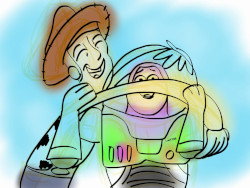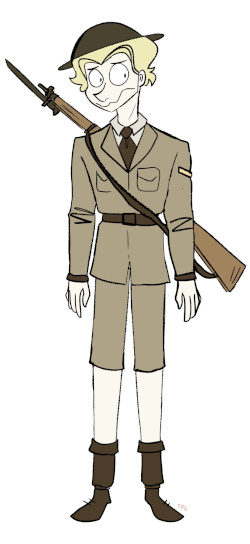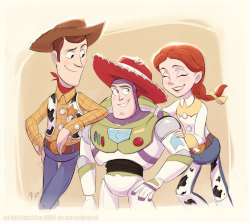How to Write Less-is-More Characters
Part 5: Your Character's Taste for Intensity
The previous models we have mostly looked at in this series focused on how Colin and other characters interact with one another. Now we’re going to look at one more piece of theory that will help us understand your quiet character's personal preferences. We're going to look at the two most important psychological hungers: stimulus hunger and time-structuring hunger.
Stimulus Hunger
A little bit of excitement and drama goes a long way for Colin. A secret fling with another man (Colin’s acceptance of Ross’ abusive behaviour is notable here) is exceptionally dramatic by Colin’s standards, and by far the most stimulating experience he has in the whole series, with coming out to Henry a close second. Aside from that, a few approving words from his bosses can keep Colin smiling and bragging to his friends.
Writing your own less-is-more character:
Everyone has their own level of hunger for stimulation, and fictional characters do too. While one person likes to go to parties or do extreme sports, another can be equally happy to listen to nature and drink green tea. How chilled or intense are your character’s hobbies? What's their ideal profession?
Examples: Tommy from Here Be Dragons is a glassmaker drafted as a WW11 soldier against his better judgement, so while he has an intense job, it's a very deliberate plot point that it's far more intense than he’d like. Compare him with Aron from 127 hours did something that suited his preferred level of intensity to make up for his relatively boring job.
Time-Structuring
Nobody is ever likely to hear Colin complain of being bored, however, he's no couch potato and does seem to have a fairly strong time-structuring hunger. We can tell this because he has a knack for filling up his time with activity (either things he is active doing himself, like his job, or he watches other activities, like the performance nights at the Pink Palace), and that may be one of the reasons he left Wales - to be somewhere busier. Think of it this way: he’s in the middle of London where something fun and interesting is always happening, more than he could possibly keep up with. He has a job that we might guess is full-time. He’s in a fairly chaotic house with multiple housemates who are party animals, and yet he doesn’t seem to feel in the least that they intrude on his free time. While he remains a passive participant, he does go along with his housemates’ activities: theatrical gatherings where Roscoe and Ritchie can show off, evenings out to the local pub and nightclub, and late evening drinks and chats at the dining table.
Writing your own less-is-more character:
As we can see with Colin, a character can be quiet and still enjoy a busy, stimulating environment. What does your character like to do in their spare time? Do they tend to complain about being bored? Do they have time-consuming responsibilities such as a job? How do they feel about having to spend their time on those? Do they do anything to compensate for a job that takes up more/less of their time than they would like – quiet retreats into nature at the weekends or meeting up with friends?
Levels of Time-Structuring
There are six levels of time-structuring that we can look at to understand Colin and your character in more detail.
Withdrawal
Colin may be subject to a touch of characterisation sleight-of-hand, here. We already know that he doesn’t push himself forward and that he doesn’t tend to seek out dramatic experiences for himself, and instead enjoys them as a passive observer. He also doesn’t talk very much – something the others acknowledge at his bedside while he is dying.
However, he doesn’t usually physically remove himself from other people, so is not as withdrawn as a watcher of It’s A Sin might judge him to be. Note that as a piece of media, It’s A Sin is only ever going to depict noteworthy events and spans a decade over five episodes, so it’s possible that Colin took time to himself that we simply didn’t see.
Writing your own less-is-more character:
A character can certainly take time to themselves where they enjoy solitude. It is worth handling carefully as a character who is alone cannot interact with other characters, but there may be something story-worthy in what they do when alone such as performing magic rituals, preparing a heist, or exploring a secret place.
Example: Buzz Lightyear starts Toy Story expecting to work as a solitary figure, and we can expect that he believes that he took the job by choice so is happy with isolation.
Rituals
Colin is undoubtedly polite, but he doesn’t seem to have an interest in small-talk. With that said, see the message above about It’s A Sin being a piece of consumable media. Rituals are routine, almost-meaningless communications, so any that Colin is prone to would likely not be shown.
This may also be a sleight-of-hand in Colin’s presentation. I believe he would have a few rituals that he would take part in – saying hellos, goodbyes, polite rituals with his sales prospects and customers, and other similar comments. We do see him saying hello and goodbye in the Pink Palace, but this is more to show the main cast’s in-joke of “La!”. The fact that we see very little dull, non-in-joke ritual comments from Colin means he either just isn’t on-screen when he does them or doesn’t make them. It appears that he doesn’t make them because we don’t see it, and our brains are wired to interpret this to mean he never does, not just that we miss it. Since Rituals are low-value communications with low value for communicating authenticity, and Colin’s having a good time living an authentic life, not depicting them helps to highlight how much he’s enjoying himself in London.
Writing your own less-is-more character:
Most people, real or fictional, perform ritualistic conversation pieces, but writers have the option either to show them or not, and this can make a character appear more reserved, or less so, to make them feel more or less authentic.
Past-Timing
Colin is not shown past-timing very much. Most of the past-timing he does is either with Henry (at least while in public), or his mother. Both of these people are dear to him and he likes talking to them, but the level of their conversation is not intimate.
Writing your own less-is-more character:
For writers, showing your characters past-timing can be a great way of giving your reader information about the setting or your characters’ opinions and moral values about things, but past-timey conversations generally lack too much value for authentically demonstrating a character. But it can give your readers some help in getting to know your character. Would your character rather talk about anything and everything rather than be silent? Do they only engage in chatting with others when there’s a specific topic to be discussed or they need certain information? How do they react when others try to past-time with them?
Activity
Colin’s happy with his job. We never got clarity on whether his job at the tailor’s was a career move or whether it just happened to be the first job he could get, but after he loses the job, he finds a new job in a print-shop which he's clearly happy with. It suggests that he’s adaptable and happy to get on with whatever needs to be done. See this Youtube video at 0:30 for an example.
This fits in with what we know about Colin: whether he's being chatty or not, he likes to be active.
Writing your own less-is-more character:
Writing a character who is orientated towards activity that requires them not to chat can be a good way of keeping your less-is-more character busy in your story without turning them into a chatterbox, which may ruin the effect you’re going for.
Games
Colin does not routinely invite drama. The only time he does so, at least on-screen, is when he has his fling with the abusive Ross, and even then Colin has a clear motive of wanting to have his first sexual experience. When he moves from Ross’ parents’ house to the Pink Palace he seems in a hurry to escape, which suggests that he’s got want he wants and doesn't want to be in that situation any more. We never see him court abusive relationships again.
Once again, selective on-screen depiction of Colin’s life – and the story he’s a part of – establishes him as a quiet, undramatic type. We only discover that he had a fling with his landlady’s son in episode three, when we need to know for the sake of the story. By then we are familiar with his underlying trend of being low-key without an early viewing of his fling with Ross leading us to think he has these flings regularly.
Writing your own less-is-more character:
Games are admittedly complicated, but they are worth looking for in your character’s backstory to work out whether they are truly less-is-more. The simplest way to know whether your character is prone to Games is whether they tend to find themselves on the Karpman Drama Triangle. If they go onto that, then they’re involved in a Game.
A character who uses their Adult Ego-State regularly and usually steps off the Drama Triangle is unlikely to play many Games.
Intimacy
Colin has a certain authentic charm, and this is what really wins him all the fans. At the beginning of the story Colin has just moved to a new city by himself (and it’s London, no less. Lots of us would recognise that as an intimidating situation), and wants to join the gay community (we don’t see confirmation that he went to London for that reason, but it seems a reasonable guess).
He’s so far outside his comfort zone that we see physical details to reinforce his discomfort: in most of his early scenes he wears his coat, even when he settles in the pub with Henry, which appears to be warm since nobody else is wearing their coats. He needs Henry’s confirmation to know it’s safe to admit to being gay, and he gets the reassurance he needs. We can see how ground-breaking this moment is for him!
Writing your own less-is-more character:
Writing your own less-is-more character: Authenticity can be uncomfortable but reaps rewards. If your character is uncomfortable sometimes but is hopeful for a positive outcome – like Colin hoping to settle into the gay community despite being way out of his comfort zone – then, whenever they talk with another character to further their goals, they are demonstrating intimacy. Intimacy will help your readers connect strongly with your characters so it’s well worth doing.
To Finish
I sometimes wonder if people who write their own mild-mannered characters try woobifying them. Colin is a great example of how to treat woobification carefully. He had the most horrific bad luck (stats on AIDS transmission), and he was very clearly a sweetheart to all who knew him. But he wasn’t a weakling, and he wasn’t an Iron Woobie. He was a professional, a sympathetic friend, and an optimist.
And to anyone who’s wondering, Colin’s actor, (Callum Scott Howells), is just as much of a sweetheart in real life, here he is talking to the judges on a talent show!
Bibliography
Berne, E., Games people play, 1964, chapters 3, 4, and 5
Berne, E., Principles of group treatment, 1966, chapter 10
Berne. E., Sex in human loving, 1970, chapters 3 and 4
Berne, E., What do you say after you say hello?, 1972, chapter 2
Credits
Title image by MoroenVarjo and used with their kind permission.





